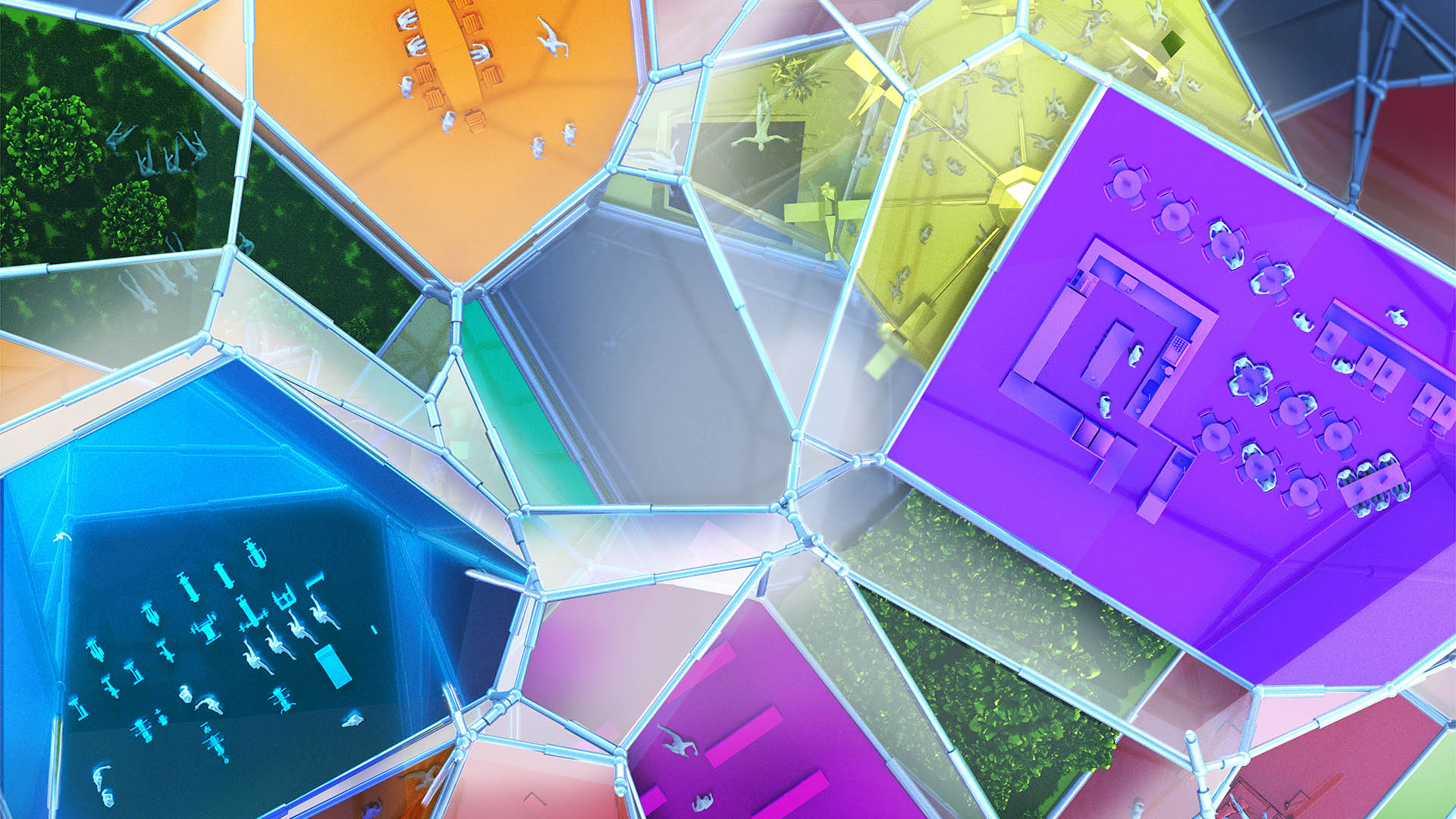The Mixing City
The Why Factory
The Mixing City
Based on the hypothesis that maximum density can fulfil maximum desires, the studio explored the potentials of negotiation in dense contexts, as well as participatory design processes to model the competing desires of the residents of a housing block.
We demand personalisation and we live in times of high mobility. Information networks allow us to find any unique place without getting lost. Everything is accessible, while new relations between private and public ownership are created. Instead of intensifying mobility, can everything come to me?
Mixing City challenges proximity between activities and program mix in order to create an intense city. A virtual tool uses time lines to find which spaces are used in close proximity to another. A sphere packing script uses spheres to represent the program and gives the springs between the spheres a value according to the demanded proximity. When the dynamic sphere pack is translated via the centroids to a 3D voronoi geometry, the surfaces with the neighbouring programs are optimised. The edges become pistons in order to shrink and increase the volume per cell; the whole building is now able to deform. An optimisation of the piston network is possible to allow for flat floors and esthetically purposes. Zooming into the surfaces and conditions in the cells, we can address transparency by a stretching latex, acoustics with folding panels and accessibility with sliding tensioned surfaces.

